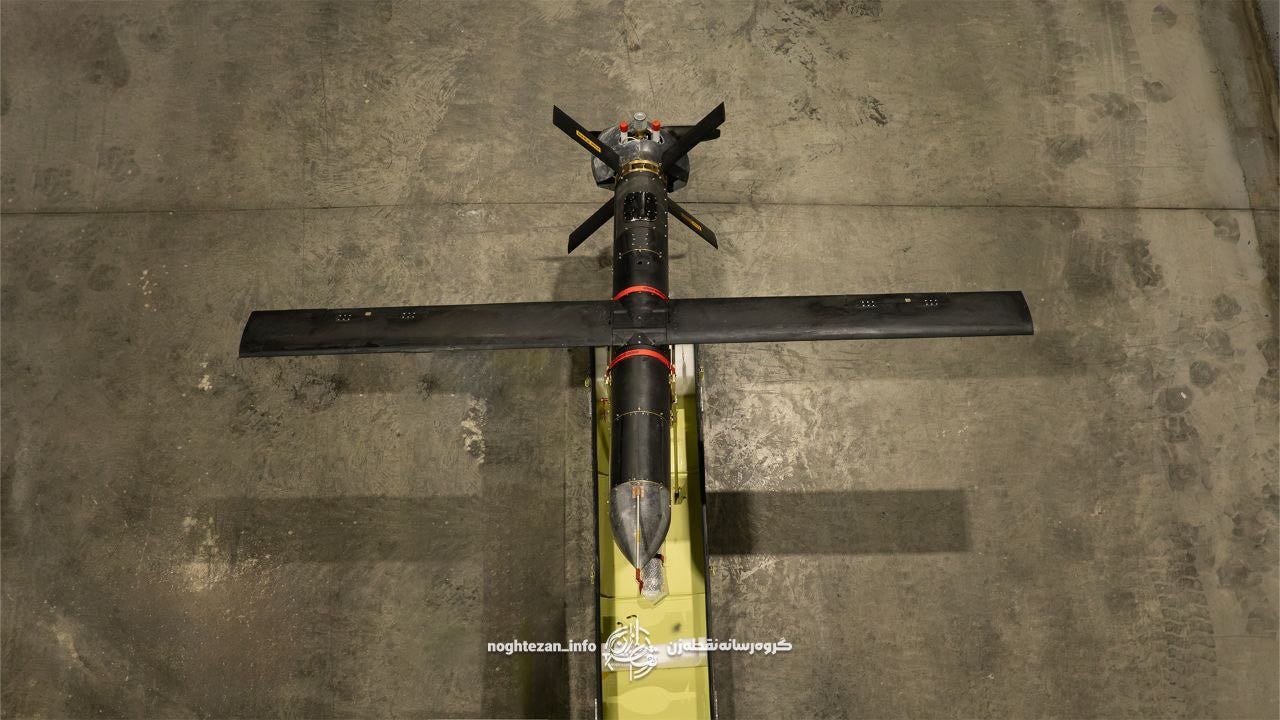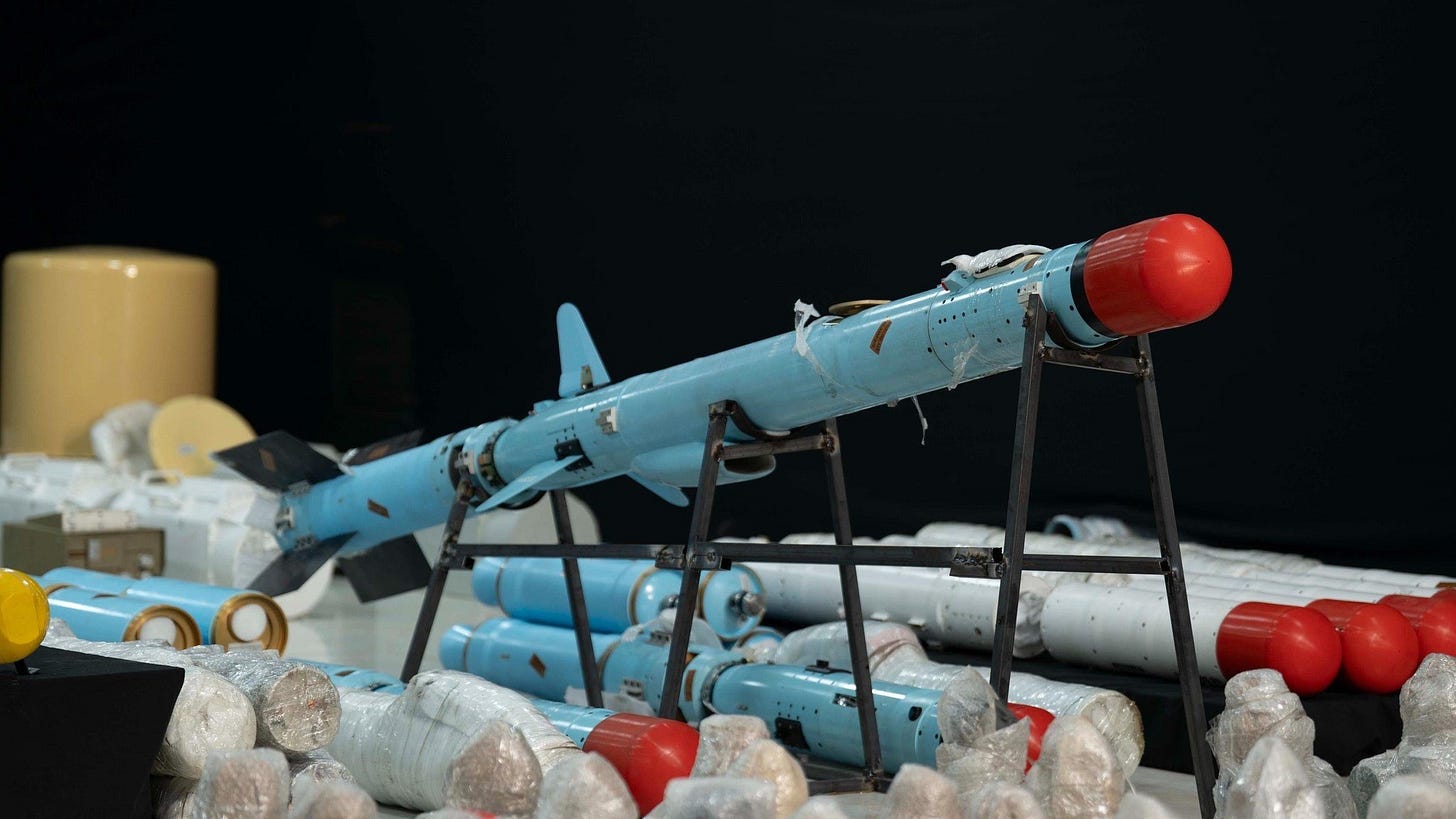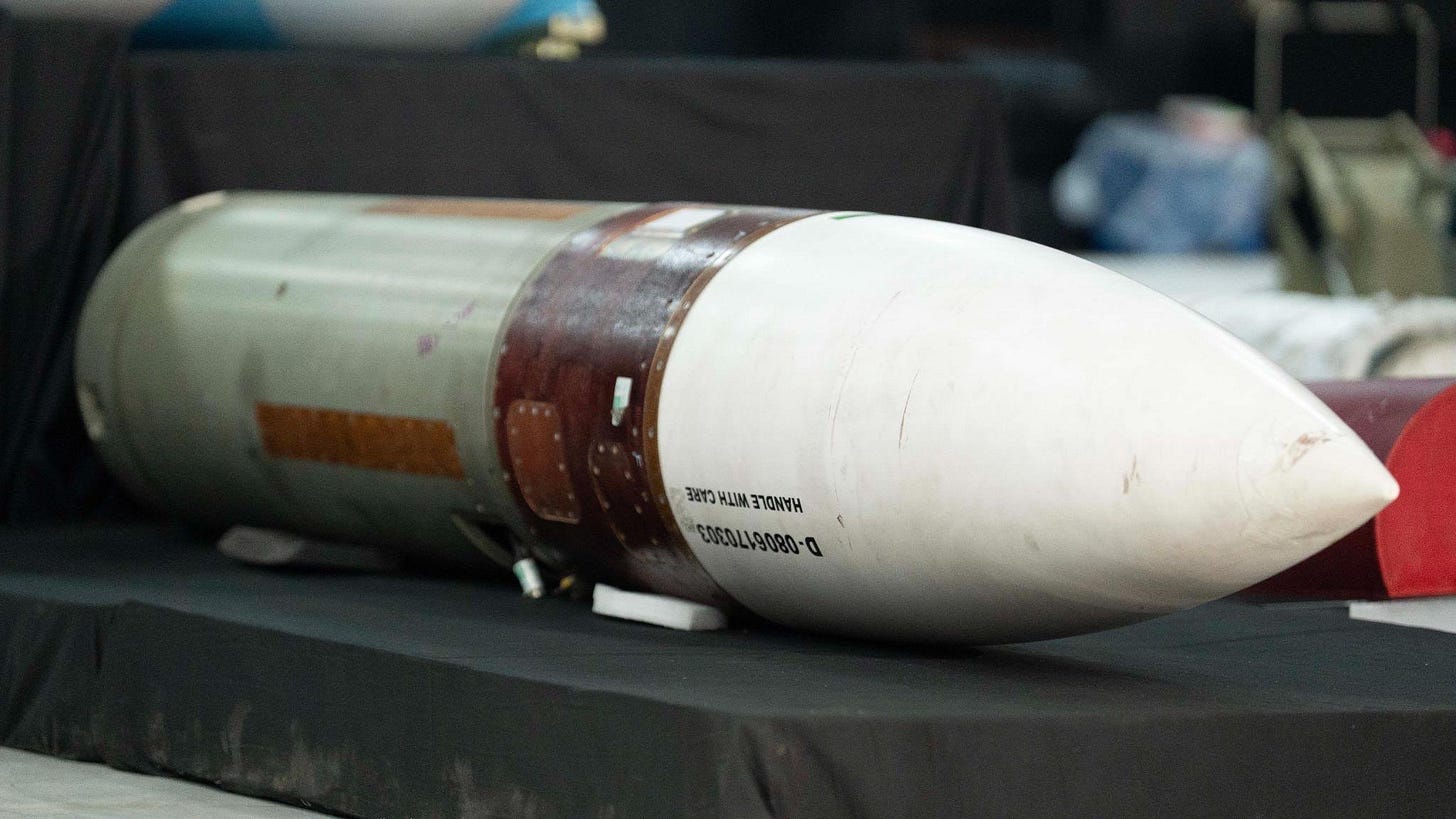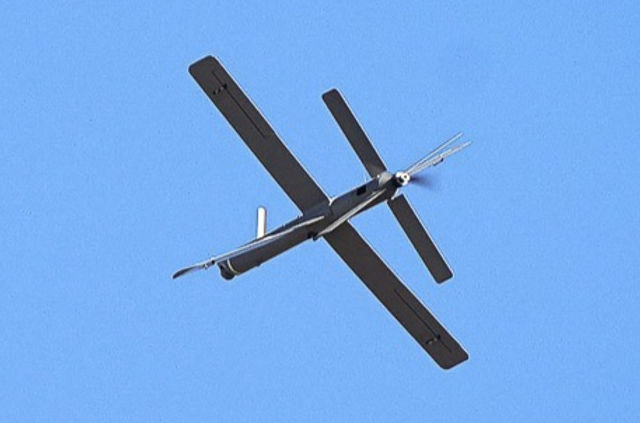Interdicted Shipment Highlights The Scale And Diversity Of Iranian Armament Pipeline To Ansarallah in Yemen
🇮🇷 🇾🇪
On 15 July 2025, the Yemeni National Resistance Forces (NRF), which are in opposition to Ansarallah in the frozen conflict that is the Yemeni Civil War, announced that they had interdicted a large shipment of over 680 tonnes of munitions and military equipment that was being transported to an Ansarallah-controlled part of the Yemeni coastline in a dhow. This interdicted shipment, which is the largest publicly disclosed interdiction to date, highlights the scale and diversity of the Iranian armament pipeline to Ansarallah in Yemen.
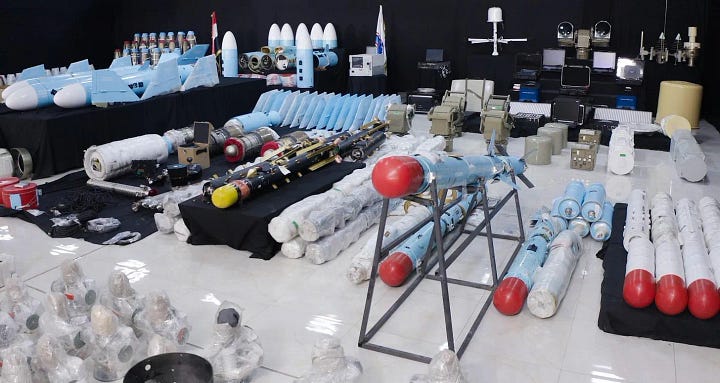
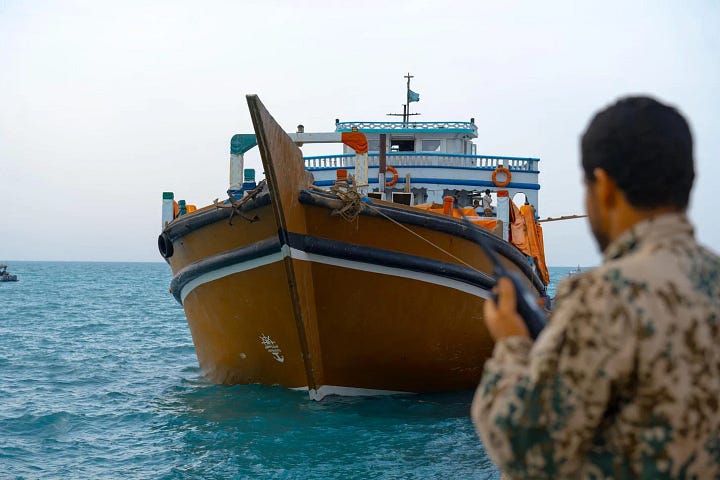
This large-scale maritime interdiction has notably taken place in the aftermath of not only the June 2025 Iran-Israel War, which has left Iran more reliant on Ansarallah than ever before, but also the aftermath of Ansarallah’s direct military standoff with the United States, which began in October 2023 and peaked in intensity during the United States’ March-May 2025 Operation Rough Rider. Simply put, both Iran and Ansarallah are likely to have desperately wanted this and other shipments—the denominator of dispatched shipments of similar, smaller, and/or greater size and significance is not public knowledge—to uneventfully bypass the webs of maritime interdiction efforts, and the timing of the interdiction is likely to be viewed as particularly inopportune. This post will cover some of the highlights from the display of interdicted munitions and other pieces of military equipment organized by the Yemeni National Resistance Forces, a display that was notably publicized in turn by the United States military.
Shahed-107 Strike Drone (Iranian designation)
While the interdicted shipment included many Iranian systems that Ansarallah has long been known to operate and longstanding Iranian systems more generally, it also included some systems that Iran has only recently unveiled. One such system is the Iranian Shahed-107 single-use propeller-driven strike drone, which amounts to an enlarged derivative of the preceding Shahed-101 strike drone design. The Shahed-107 is distinguished by the cruciform—X-shaped—tail fins, which are V-shaped on the Shahed-101.
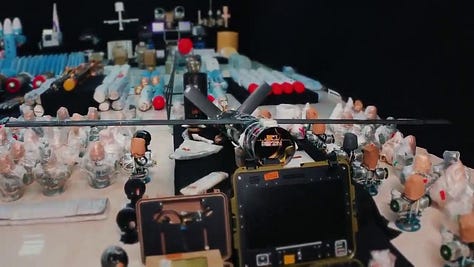
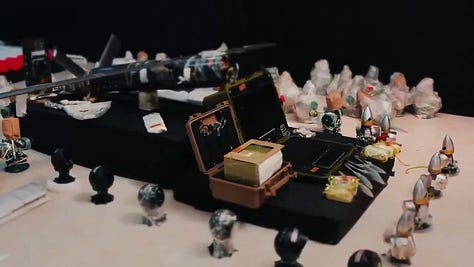
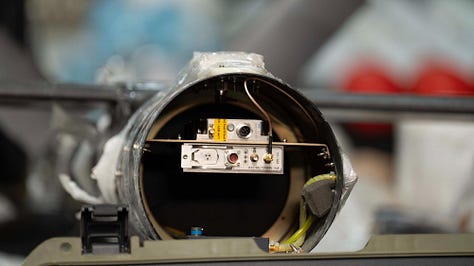
It is important to note that Iran only unveiled the Shahed-107 during the June 2025 Iran-Israel War. The Shahed-107 offers Ansarallah yet another means of targeting Saudi Arabia and American military bases in Djibouti, but lacks the range required to target Israel from northern Yemen. The specimens interdicted en route to Yemen may or may not have been configured and intended for use in a maritime strike role.
Small Piston Engines For Fixed-Wing Drones
The interdicted shipment included a large number of small piston engines for use with propeller-driven fixed-wing drones, a grouping that includes both strike drones and unarmed ISR drones. Ansarallah is known to operate a variety of Iranian single-use propeller-driven drones and has been reportedly assembling, if not manufacturing, one or more strike drone designs within Yemen. According to reports, local assembly, if not manufacture, within Yemen draws upon imported commercially-sourced piston engines built by Chinese companies. While unconfirmed, this shipment may have included piston engines built in Iran, which may perhaps have been intended for drone designs that are not assembled, if not manufactured, in Yemen.
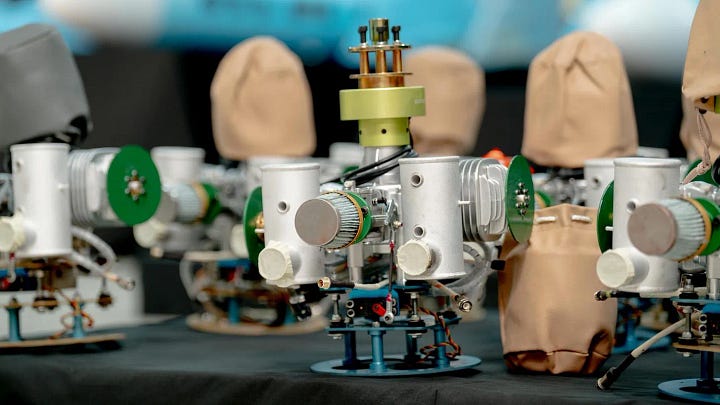
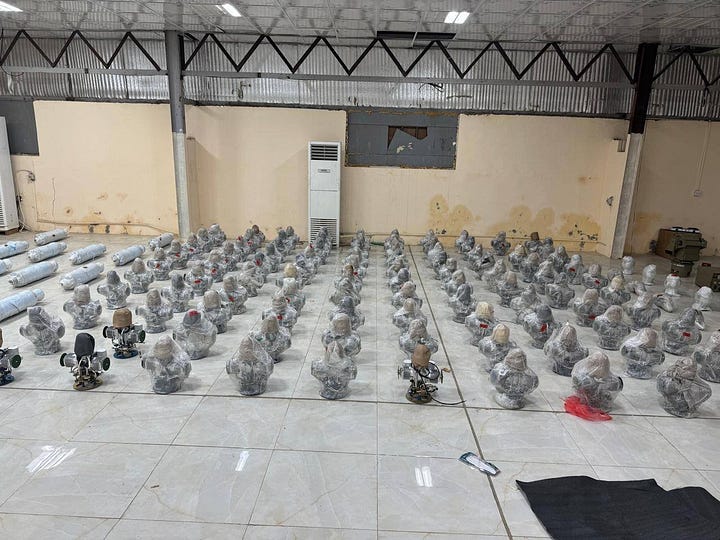
Noor/Ghader/Ghadir Anti-Ship Cruise Missiles (Iranian designations)
Several disassembled specimens of Iranian Noor/Ghadr/Ghadir family anti-ship cruise missiles were included in the display of interdicted munitions. While built in Iran, the underlying design is the Chinese C-802, which Iran initially produced under licence until it absorbed the technology to such a level as to build upon the C-802/Noor design and develop the larger and longer-range Ghader and Ghadir. The Ghadir is designated al-Mandab-2 in Ansarallah’s service.
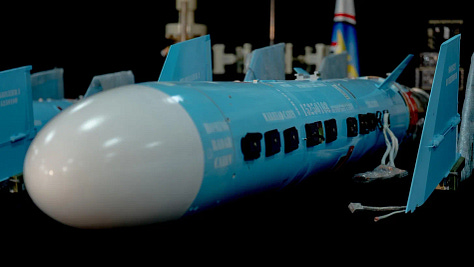
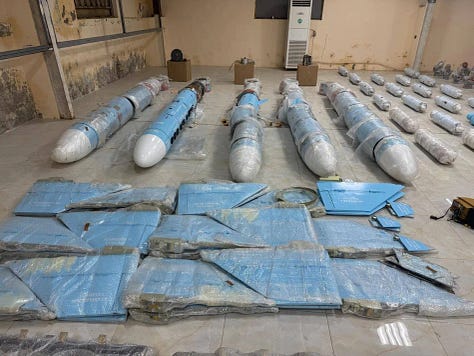
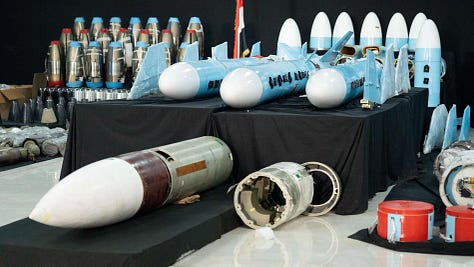
Sejjil Anti-Ship Cruise Missile (Ansarallah designation)
The Sejjil is a turbojet-powered anti-ship cruise missile that is equipped with an active radar homing seeker. It is reported to have a nominal maximum range of 180 kilometers while equipped with a 100-kilogram warhead, which is fairly small for a ground-launched anti-ship cruise missile. Ground-launched cruise missiles that use air-breathing turbojet engines are typically launched with a solid-propellant rocket booster. The Sejjil’s booster can be seen installed on the interdicted specimen. Note the air intake, the distinctive control surfaces on the Sejjil, and the cruciform fins on the solid rocket booster.
Ansarallah previously displayed the Sejjil at a parade in Sana’a.
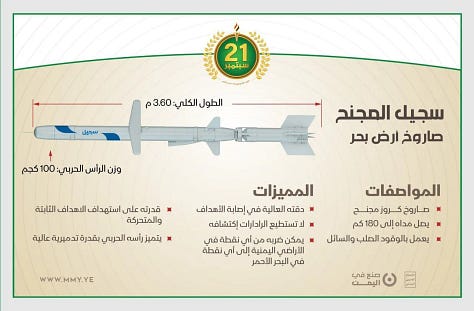
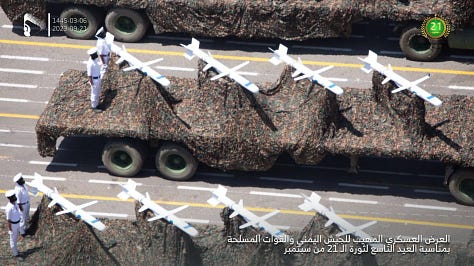
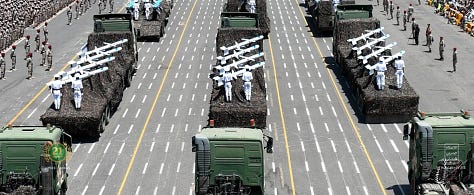
It is important to note that this Iranian anti-ship cruise design has not been publicly displayed within Iran and first showed up in the hands of Ansarallah in Yemen. The Sejjil has a very curious design and is notable as a small and presumably low-cost anti-ship cruise missile that is better optimized for harassment strikes, given that the warhead is too small to sink most major warships, let alone very large merchant ships. The existence of an air intake integrated into the fuselage is also notable, given that Iranian designers do not hesitate to mount turbojet engines outside of the fuselage in order to maximize the internal fuel load and, as such, range. This is the case with the Iranian Paveh cruise missile design, which is known as the Quds in Ansarallah’s service. Ansarallah notably operates anti-ship cruise missile versions of the Quds that it designates the Sayyad and Quds Z-0.
Kowsar-222 Short-Range Anti-Ship Missile (Iranian designation)
The presence of the Iranian Kowsar-222 anti-ship missile, which is better characterized as a short-range multi-role surface-to-surface missile with a possible secondary surface-to-air mode, amounts to a new development, given that the presence of this missile in Yemen was not public knowledge. The Kowsar-222 is a peculiar rocket-powered missile that was only recently publicized in Iran, where it is primarily used to arm small naval vessels.
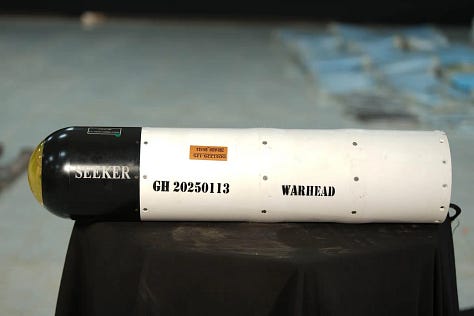
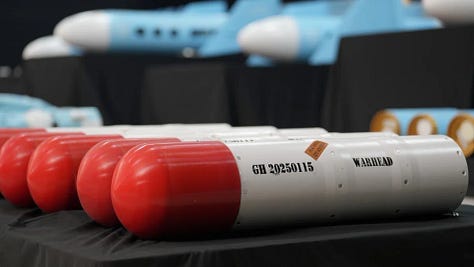
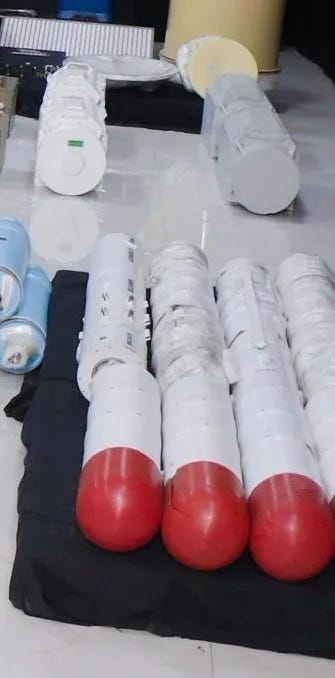
The Kowsar-222 is far too small to severely damage, let alone sink, a warship or a large merchant ship. It does, however, enable highly targetet close up attacks on vessels of all sizes, such as a strike against the radar, bridge, or main gun of a warship, or the bridge and armed security guard positions of a merchant ship. Supposing that the Kowsar-222 has a surface-to-air mode, it can also be used against helicopters—it doesn’t take much to outrange the machine guns and/or autocannons used to arm helicopters or pod-mounted unguided rockets launched from a low altitude. This small and unassuming Iranian missile may, as such, play an outsized role in Ansarallah’s maritime strike and coastal defence capabilities going forward.
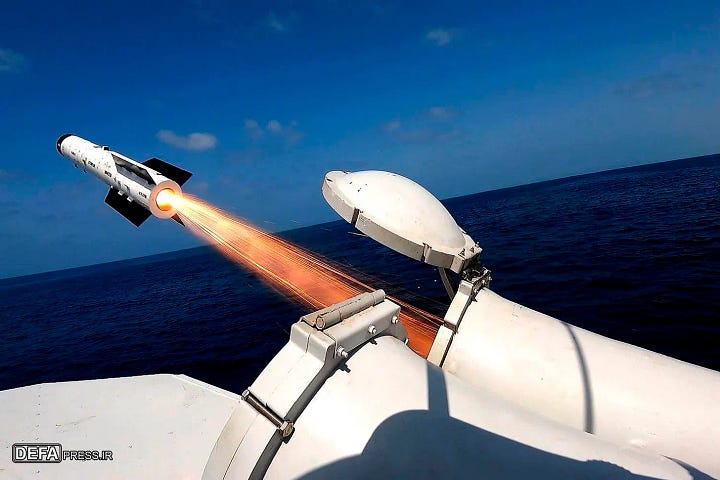
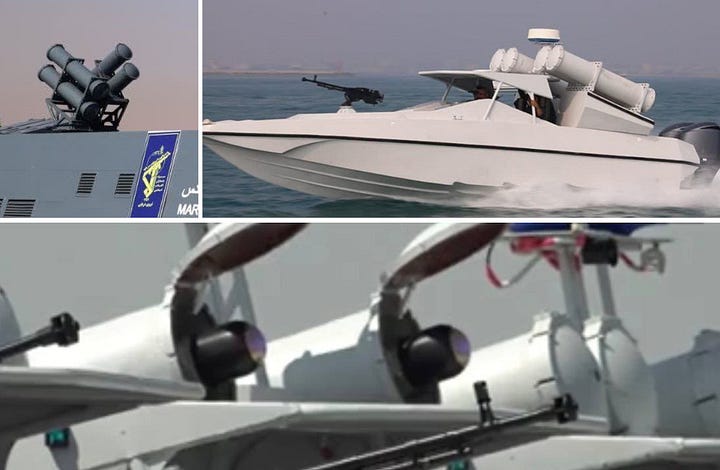
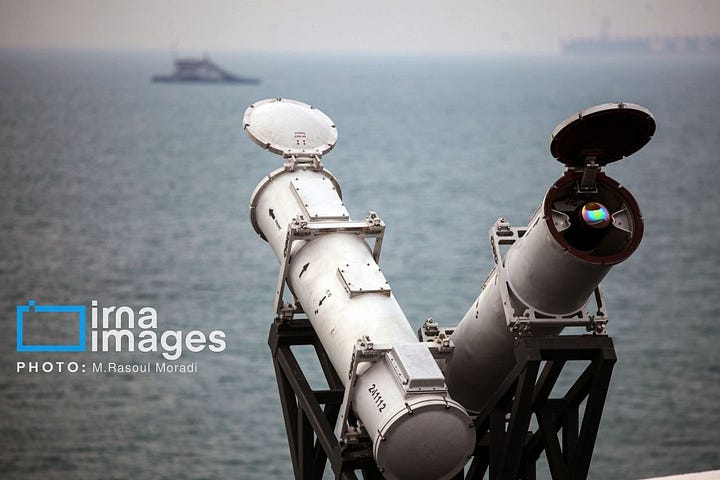
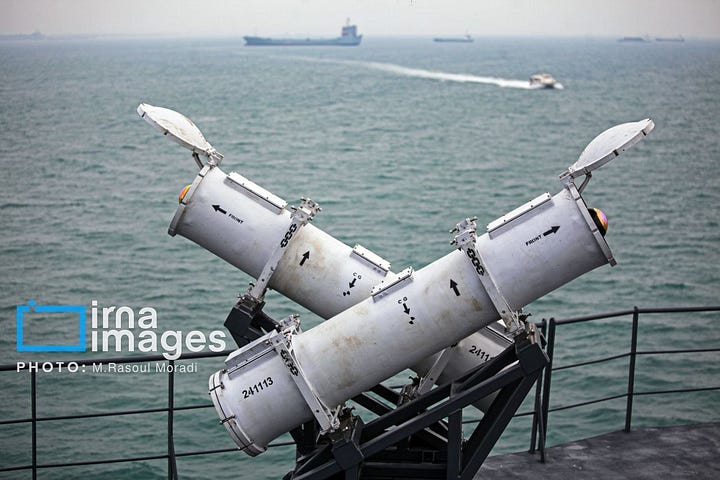
Anti-Ship Ballistic Missile/Guided Rocket Seekers
While discussions of anti-ship ballistic missiles typically refer to ballistic missiles that are equipped with active radar homing seekers in much the same manner that most anti-ship cruise missiles are equipped with active radar homing seekers, Ansarallah’s anti-ship ballistic missiles/guided rockets are primarily equipped with electro-optical seekers. This is a uniquely Iranian practice that takes advantage of the typically high-visibility atmospheric conditions encountered in the Persian Gulf and the Bab al-Mandeb. While fairly rudimentary electro-optical seekers can only be used in daylight—use at night requires the presence of a more expensive imaging infrared seeker—both Iran and Ansarallah are well positioned to take advantage of short flight times and predictable movements by the target ships in narrow and confined bodies of water.
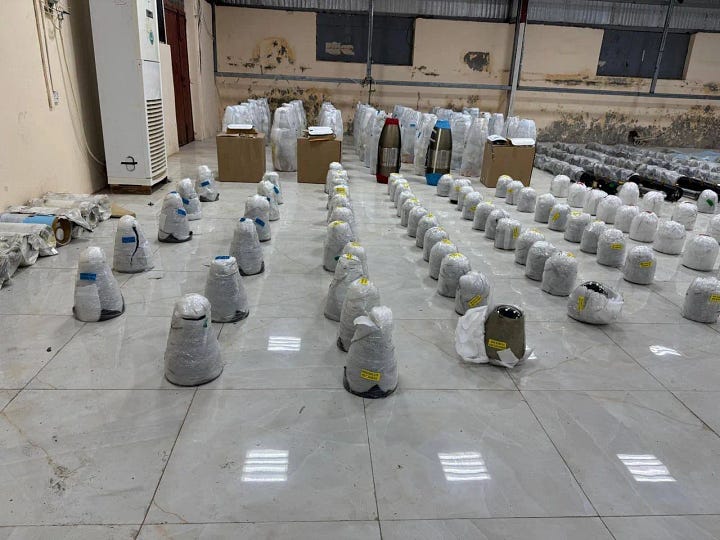

Taer-2 Surface-to-Air Missile (Iranian designation)
Ansarallah deploys what is best characterized as a “guerrilla air defence” capability set that makes use of remaining former Republic of Yemen stocks captured during the Yemeni Civil War and various systems supplied by Iran. This “guerrilla air defence” capability set capitalizes on the mountainous geography of northwestern Yemen and Ansarallah’s preferred approach to warfare.
While Iran has supplied Ansarallah a variety of entirely passive sensors and surface-to-air munitions, it has also supplied Ansarallah radar-guided surface-to-air missile systems. Among the interdicted systems on display is the seeker of an Iranian Taer-2 medium-range surface-to-air missile. The presence of just a Taer-2 seeker on display raises the question of where the rest of the surface-to-air missile is. The Taer-2 uses a solid-propellant rocket motor. While Iran is understood to have helped Ansarallah establish the industrial capacity required to produce some components of various missiles and other munitions, even the most basic surface-to-air missiles are fairly complex designs. While unconfirmed, the presence of just a Taer-2 seeker may indicate that Ansarallah can produce a suitable solid-propellant rocket booster within Yemen.
Quds Land-Attack/Anti-Ship Cruise Missile (Ansarallah designation)
Included among the many interdicted non-assembled munitions components were turbojet engines associated with the Iranian Paveh land-attack cruise missile, which Ansarallah designates Quds. It is important to note that Ansarallah operates anti-ship cruise missile versions of the Quds that it designates Sayyad and Quds Z-0.
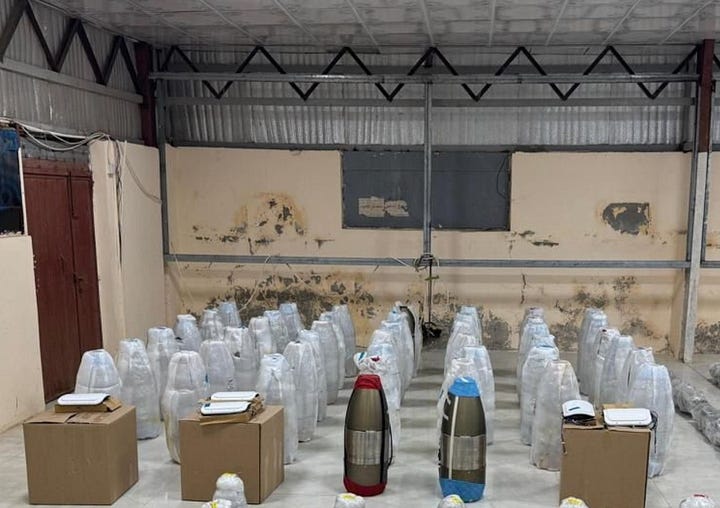
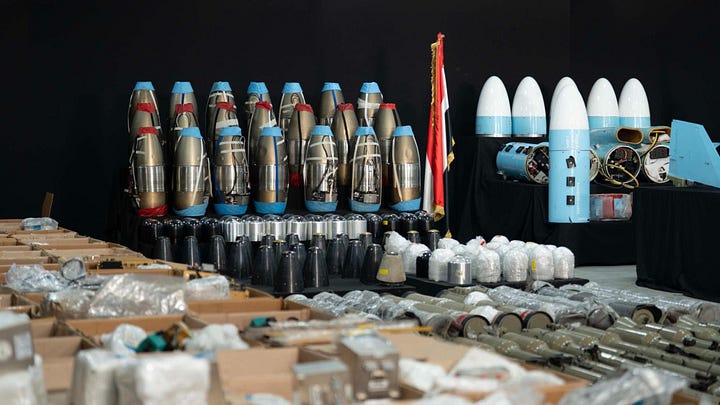
Relative to the Taer-2 surface-to-air missile, Ansarallah is far better positioned to assemble the Quds from a combination of more complex components shipped from Iran, including the turbojet engine, and less complex components manufactured in Yemen. While unconfirmed, shipments of components are likely indicative of the establishment of a final assembly “line” within Yemen that may or may not draw upon some components that are built in Yemen.
Ballistic Missile Components
Included among the many interdicted non-assembled munitions components were various ballistic missile components, including an inertial navigation system and many fins. While the presence of such components suggests the existence of a—at a minimum—final assembly “line” within Yemen, it is important to note that ballistic missiles tend to be far too large to be shipped on a dhow. The multifaceted challenges encountered in attempting to ship fully assembled ballistic missiles of various range classes are likely to have been Iran’s original impetus for helping establish production—or at least final assembly—facilities and capacities within Yemen.
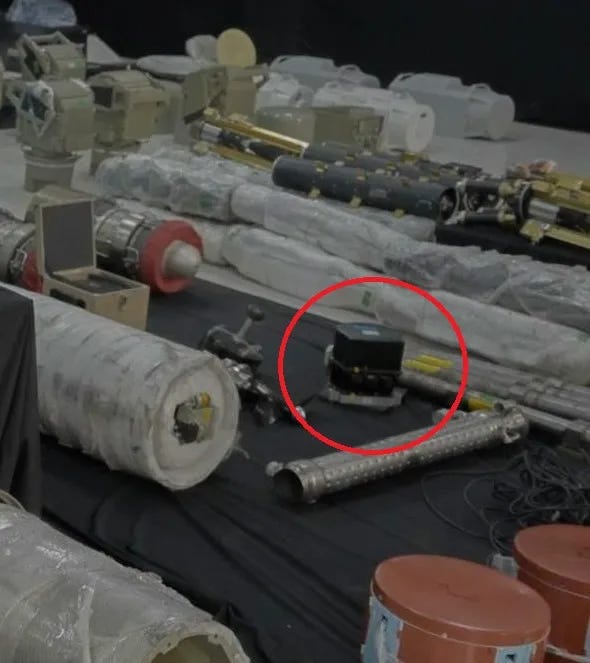
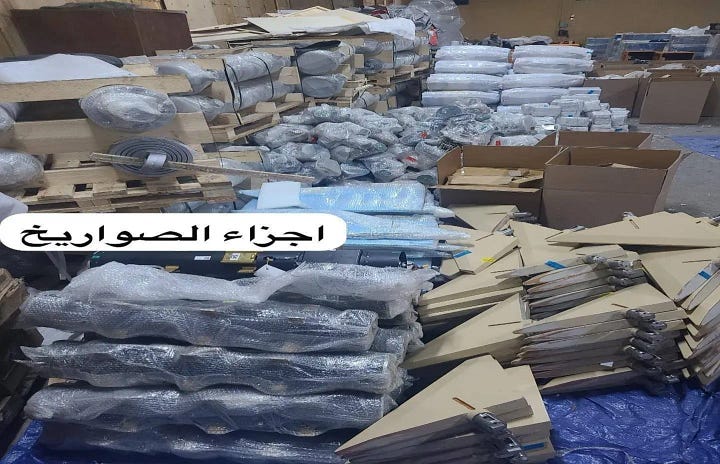
Qaem-118 Surface-To-Air Missile (Iranian designation)
Perhaps the most exotic of the interdicted munitions and munitions components is the Qaem-118, a small turbojet-powered surface-to-air missile that Iran only unveiled earlier in 2025.
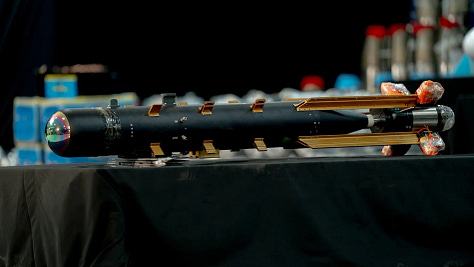
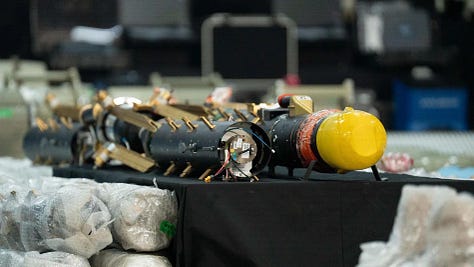

The Qaem-118 is either a reverse-engineered American Coyote Block 2 turbojet-powered surface-to-air missile or a very close emulation of this very distinct American design, which primarily exists to intercept propeller-driven strike drones and similar aerial threats.

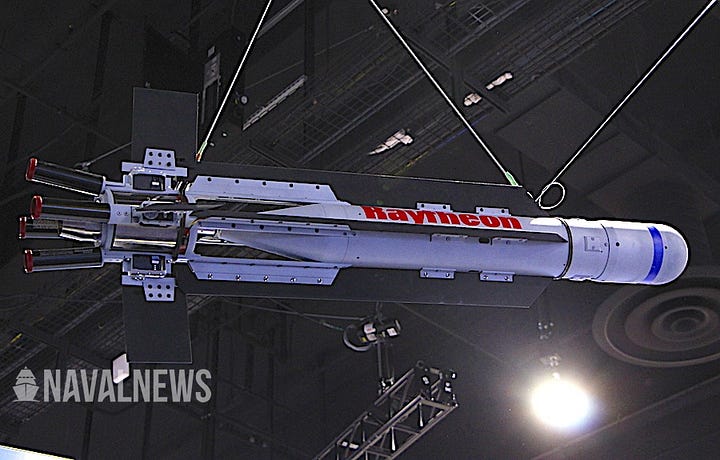
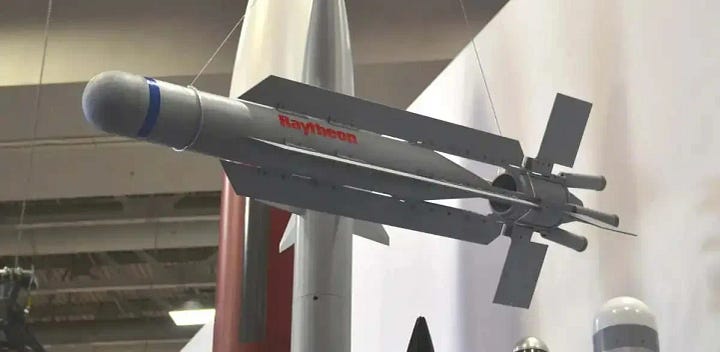
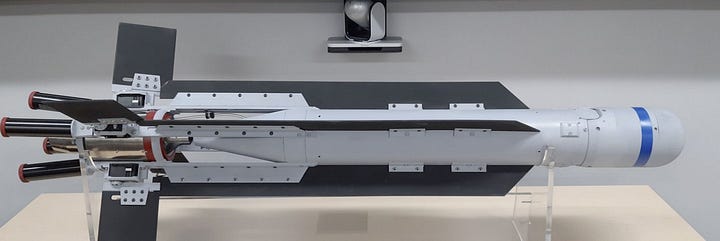
The presence of the Qaem-118 in the interdicted shipment may indicate how important Iranian decision-makers consider Ansarallah’s military capabilities to be for Iran’s own security. All countries assume risk in transferring armaments beyond their borders, and Iran is no exception. The Qaem-118 appears to be a very new design, and it is possible that this interdiction amounts to the first time that Iran’s adversaries have been able to put their hands on a real-world specimen, a dynamic that is likely to drive countermeasure development and thereby diminish the effectiveness of the Qaem-118 in its current configuration.
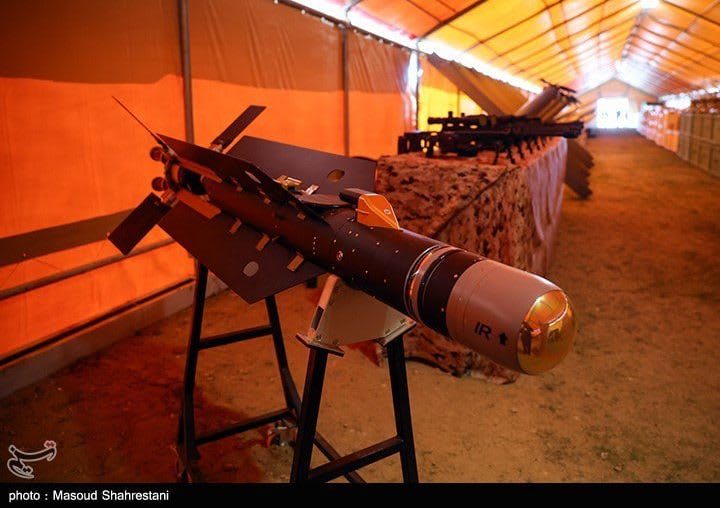
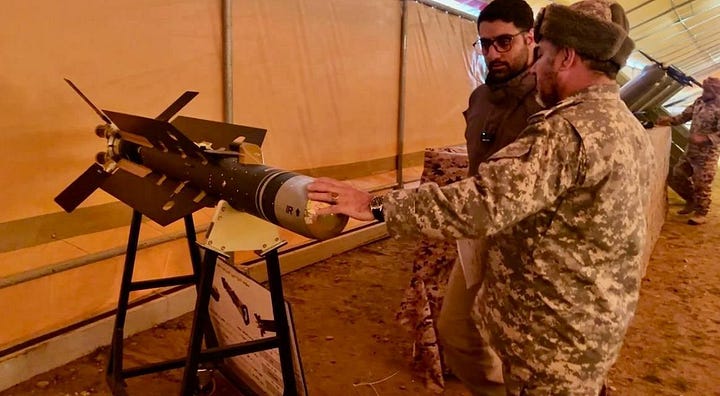
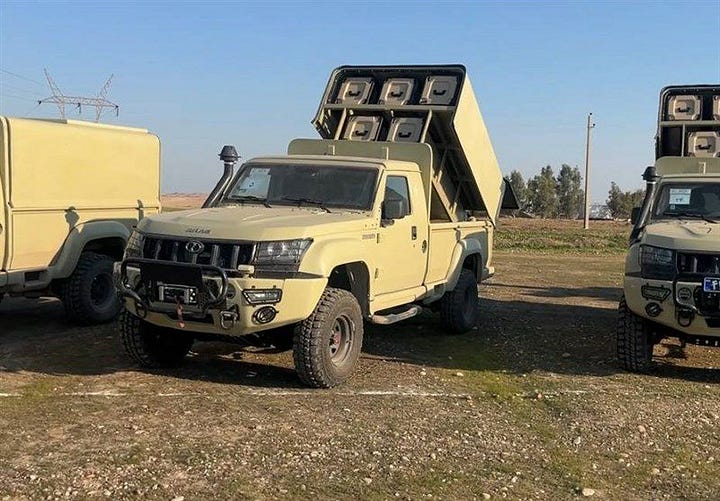
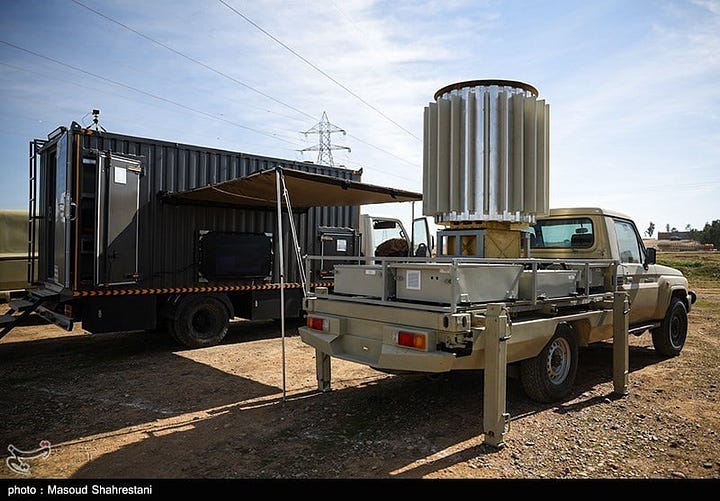
While the interdicted shipment included Qaem-118 surface-to-air missile specimens, there is no indication that the shipment included the launcher, launch cannisters, and radars with which the Qaem-118 is associated within Iran. It is possible that there are multiple ways to employ the Qaem-118 and/or that Iran has developed a different approach for Ansarallah to employ the Qaem-118 as part of its “guerrilla air defence” capability set. It is worth noting that the wheeled Iranian Aras-3 based launcher seen in the above image set is understood to also be capable of launching Ra’ad-2 loitering strike drones, a system that I have covered in the past:
Iran Expands Loitering Strike Drone Arsenal
Iranian single-use propeller-driven strike drone designs, above all the Shahed-136, are increasingly well-known worldwide. While often inaccurately characterized as loitering munitions, uncrewed aircraft designs like the Shahed-101, Shahed-131, and Shahed
Various Pieces of Air Defence Equipment
Passive sensors of various types appear to be the backbone of Ansarallah’s “guerrilla air defence” capability set, which is notably designed to take full advantage of northwestern Yemen’s mountainous terrain. This includes electro-optical and imaging infrared sensors as well as signals intelligence/electronic intelligence sensors, which also have applications for Ansarallah’s maritime strike capabilities. The interdicted shipment included many such systems.
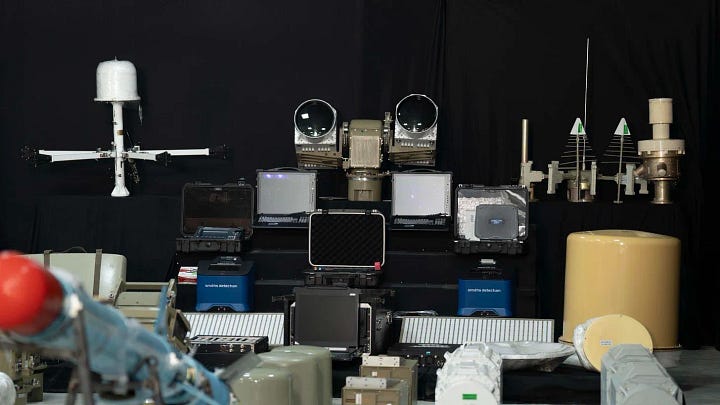
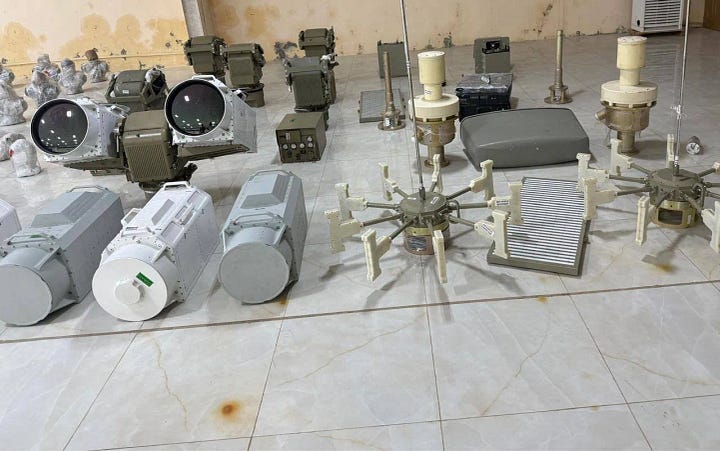
Almas Fiber-Optic Non-Line-of-Sight Surface-to-Surface/Anti-Tank Missiles (Iranian designation)
While the Iranian systems that were indicted have received a lot of attention, it is also important to reflect on the fairly long list of Iranian systems that are not publicly known to be deployed by Ansarallah or included in this interdicted shipment. Simply stated, Iran appears to be very selective in terms of what it supplies Ansarallah. In part, this may reflect Iran’s prioritization of its own needs in some areas and the suitability of a given system for Ansarallah’s purposes. Other considerations are also likely to be at play, above all the needs of Hizballah in Lebanon. It is notable that there is no indication in the public sphere that Iran has transferred any specimens from its Almas fiber-optic guided non-line-of-sight (NLOS) surface-to-surface/anti-tank missile design to Ansarallah.
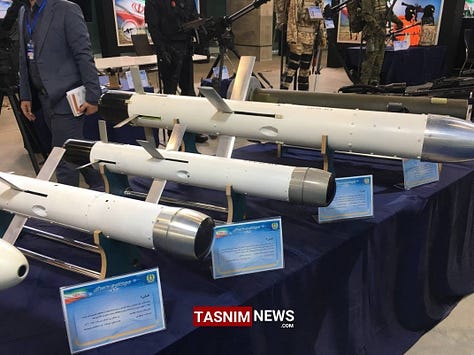
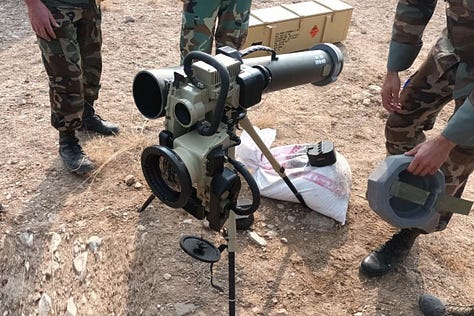
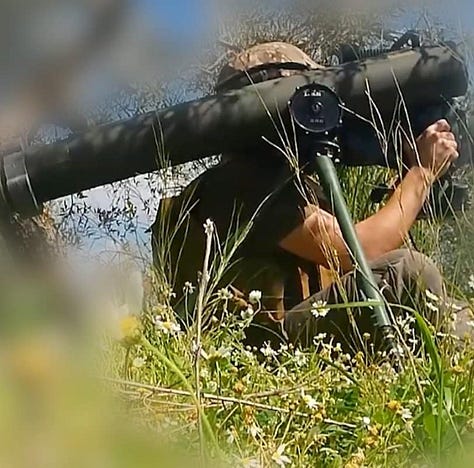
The Almas family refers to the Iranian derivation of the Israeli Spike family of NLOS surface-to-surface/anti-tank missiles, which Iran is understood to have accessed following the capture of several specimens by Hizballah in the 2006 Israel-Lebanon War. As of this writing, the Almas has only appeared within Iran and in the hands of Hizballah, which employed Almas family missiles against Israel over the course of 2024. Israel notably targeted the factory in Iran that builds Almas missiles during the June 2025 Iran-Israel War, a data point that likely reflects how seriously Israel appears to be taking the difficult-to-counter threat posed by these small NLOS surface-to-surface missiles against not just Isreali military vehicles but also stationary sites/facilities near the Israel-Lebanon border.
While Ansarallah does not encounter anything like the Israeli Merkeva Mk4 tanks that Hizballah encounters along the Israel-Lebanon border, the Almas family is best understood as a family of NLOS surface-to-surface missiles. NLOS missiles are very well suited to areas with mountainous terrain, which includes northwestern Yemen. The Almas family is, however, likely to be quite expensive, limited in supply, and prioritized for Hizballah. While this is speculative, it is possible that Ansarallah remains below Hizballah on the pecking order in areas in which Hizballah also has need. Consider, for example, how Hizballah does not, in effect, compete with Ansarallah for deliveries of Iranian long-range ballistic missiles but likely competes with—and comes out on top of—Ansarallah for deliveries of the likes of the Almas family.


